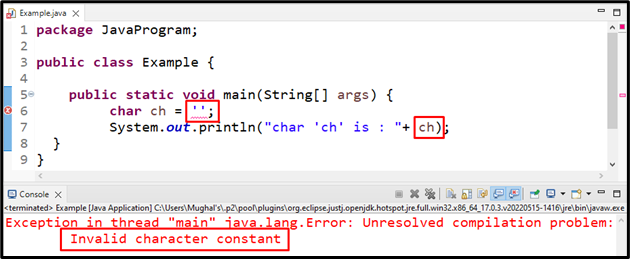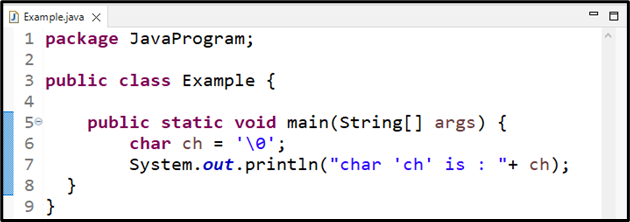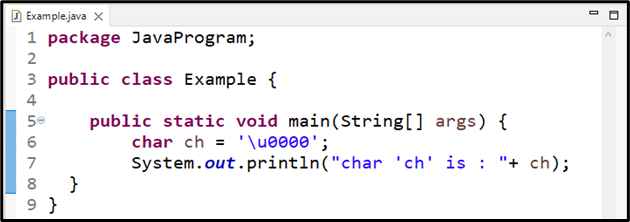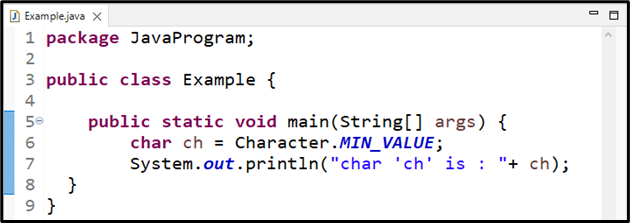This tutorial will show you how to represent an empty string in Java. So, let’s start!
How to Represent Empty char in Java?
To represent an empty char in Java, use the following methods:
Let’s understand how these methods help in the specified purpose.
Method 1: Represent Empty char in Java Using Empty Single Quotes
When we come across such scenarios where it is required to declare an empty “char”, the first thing that comes to mind is to assign single quotes (”) as a “char”. A compile-time error is generated by Java as a result of this method because an empty value of char does not belong to any character.
Example 1
We will assign a single quote (”) to a character type variable named “ch”:
It will show an error “invalid character constant”:
For solving the above problem, we will enter a space between single quotes (‘ ‘) as a character. The space will act as a character, and Java will consider it as a null or empty char:
We will print the value of the char variable “ch” using print statement:
The output signifies that the char variable “ch” is empty:
Method 2: Represent Empty char in Java Using Null Character
You can also represent a char as an empty character using a “Null Character” (\0), where the character “\0” denotes a null value.
Let’s see an example of how \0 acts as an empty character.
Example
Here, we will assign a null character to a char variable “ch”:
Then, print the out the character value with the help of the “System.out.println()” method:
The output shows that the char “ch” is empty:
Method 3: Represent Empty char in Java Using Unicode Value (\u0000)
Another method to represent an empty char is utilizing the Unicode value “\u0000”. The given Unicode represents a null value.
Let’s move towards an example for better understanding.
Example
In this example, we will allocate a Unicode value “\u0000” to a “ch” variable:
Then, we will print the created empty char on the console:
The output indicates that char is null:
Method 4: Represent Empty char in Java Using MIN_VALUE Constant
“MIN_VALUE Constant” represents a character instance’s minimum value. In Java, the minimum value is an “u0000”, which can be retrieved by utilizing the MIN_ VALUE constant that belongs to the Character class, and passed to any char type variable for creating an empty character.
Example
We will now assign the constant of the Character class named “MIN_VALUE” constant to a char variable “ch”:
Then, print the variable “ch” to see either it is empty or not:
The output indicates that the “ch” is empty:
We gathered all the methods to represent an empty char in Java.
Conclusion
To represent empty char in Java, you can use different methods such as empty single quotes, null character (\0), Unicode value (\u0000), MIN_VALUE Constant of the Character class. In empty single quotes, if you do not enter space between quotes, it throws an error because an empty char value does not belong to any character. To resolve this issue, enter a space between single quotes. This tutorial explained the methods for representing empty char in Java with detailed examples.









